 Are you using your blog for business?
Are you using your blog for business?
Wondering how to combine blog posts with social media content to move people through the sales cycle?
In this article, you'll discover how to use blog posts to create social media content at every stage of your marketing funnel.
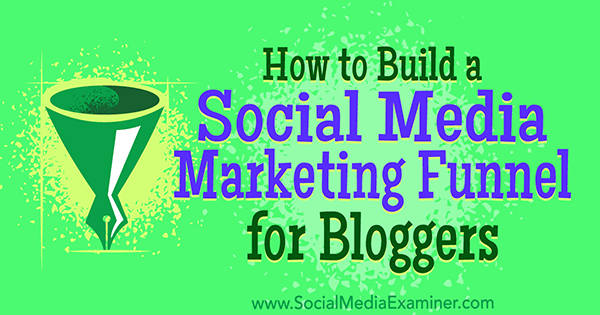
#1: Define Your Marketing Goal
Creating a social media marketing funnel is directly tied to your marketing goals. To begin, think of one marketing goal you want to accomplish. Beginning with a single short-term goal is much easier than tackling long-term goals. Also, choose a realistic, measurable goal so you can identify whether you've reached it.
Here are a few examples of goals that would make a great starting point for a social media marketing funnel:
- If you're launching a new online course, aim for a specific number of pre-orders before you launch.
- If you're opening a restaurant, focus on making a certain number of reservations for your first quarter of business.
- If you want to grow your email subscriber list, concentrate on increasing your rate of new subscribers from 8% per week to 10% per week.
#2: Publish Six Blog Posts to Create a Funnel to Support the Customer Journey
After you identify your goal, you want to ensure you publish content that leads people toward that goal. To do that effectively, your content must cater to people at different stages in the funnel. For each stage, write two blog posts that support your goal at each stage: awareness, trust, and conversion.
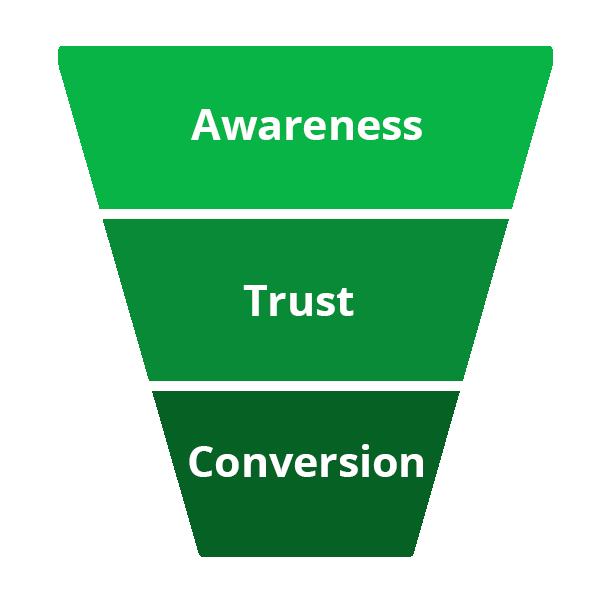
Stage 1: Blog Posts That Create Awareness
To create awareness, think about blog posts that would attract new people to your brand and demonstrate what you can offer. Also, if your blog posts give people a quick-fix solution to a problem, you'll earn enough trust for them to hang around and learn more.
In this first stage of the buying process, these types of blog posts work well:
- Top resources post: Share your best resources with your audience.
- Product and gift guides: Share about and rank products, gifts, and/or services that suit a specific purpose.
- How-to posts: Present a problem and demonstrate a solution (or many solutions) to that problem.
- Question-and-answer posts: Write a post in Q&A format to answer your readers' burning questions about a product.
For example, Jane Friedman's website helps writers navigate the publishing world, and this how-to post about how to publish a book explains a topic that would appeal to new authors who aren't familiar with the process. The detailed post establishes her expertise in her field and offers an easy way to understand the traditional publishing process.
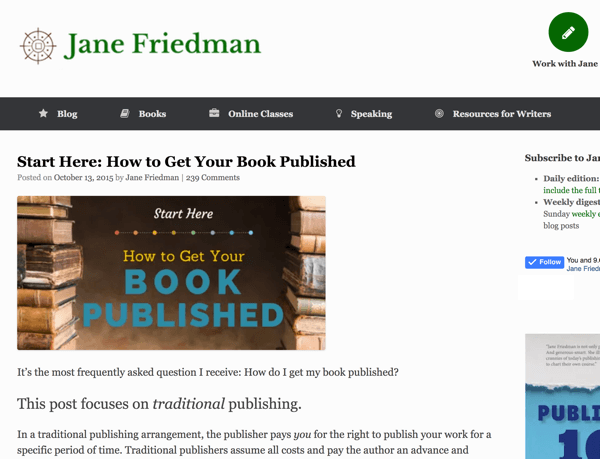
Stage 2: Your Prospect Wants to Know, Like, and Trust You
At this stage, the word “want” is important. Marketers often assume that loyalty is hard-won. However, when you help people, they naturally want to like and trust you. Your prospect becomes eager to learn more and figure out if you can help. The higher the price tag, the more content you'll need at this stage.
Here are five blog post types that work well for building trust, likeability, and loyalty:
Get World-Class Marketing Training — All Year Long!
Are you facing doubt, uncertainty, or overwhelm? The Social Media Marketing Society can help.
Each month, you’ll receive training from trusted marketing experts, covering everything from AI to organic social marketing. When you join, you’ll also get immediate access to:
- A library of 100+ marketing trainings
- A community of like-minded marketers
- Monthly online community meetups
- Relevant news and trends updates
- Customer case studies: Share a customer's experience to show readers how your business helped that customer.
- Expert interviews: You might ask an expert to give insight into an issue that's relevant to your readers.
- Inspirational and motivational stories: Tell a personal story to motivate and inspire your readers.
- Opinion pieces: Persuade readers to consider an alternative point of view by challenging conventional wisdom on an issue.
- Research breakdown: Analyze the takeaways from several current surveys or studies about a trend in your industry. Or summarize an industry report to help your readers understand how the information may affect them.
For instance, One Kings Lane sells furniture, décor, and interior design services. This expert interview about how to become more confident about choosing paint colors will appeal to an audience that's interested in home décor and help prospects with a common problem.

Stage 3: Your Prospects Are Warm and Ready to Take the Relationship Further
Conversion doesn't necessarily mean asking for the sale. To illustrate, you might ask the reader to subscribe to your email newsletter so you can nurture the sale via email. However, it's a myth that blog posts should never contain sales information.

Discover Proven Marketing Strategies and Tips
Want to go even deeper with your marketing? Check out the Social Media Marketing Podcast! Publishing weekly since 2012, the Social Media Marketing Podcast helps you navigate the constantly changing marketing jungle, with expert interviews from marketing pros.
But don’t let the name fool you. This show is about a lot more than just social media marketing. With over 600 episodes and millions of downloads each year, this show has been a trusted source for marketers for well over a decade.
When you're in business, you're supposed to ask for the sale. It's absolutely okay and necessary for you to tell your potential customers how you can help them and why they should buy from you. Focus on attracting and nurturing relationships 80% of the time, but you can focus on conversions with the other 20%.
Here are three types of blog posts that work well for conversions:
- Call the reader to action: Run a challenge that motivates your readers to take action. You can organize a formal challenge where readers must sign up to participate or an informal challenge designed to foster a sense of community.
- Invite the reader to enter a competition/giveaway: Promote a product or service by enticing readers to enter a competition by writing no more than 25 words about a given topic.
- Launch a new product or service: Write a blog post announcing a new product and explain how the product helps your customers.
For example, when Buffer launched a tool that helps users tailor social media posts to various platforms, this blog post not only announced the new feature, but also explained the feature's value. The post walks readers through all of the details involved in customizing posts, and then explains how the Buffer tool simplifies the process and saves time.
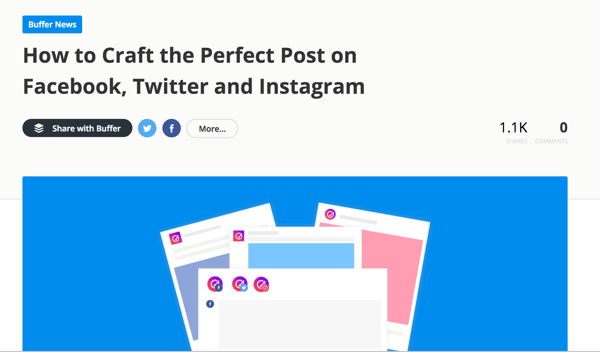
#3: Repurpose Published Blog Posts to Create Social Media Marketing Collateral
After your six blog posts are published, break your posts down into smaller chunks you can use on social media. Create graphics, videos, and so on to support each piece of content as you roll it out.
As a model, these six blog posts support the launch of a new blogging app:
- How to create a blog post strategy in 5 minutes or less (how-to)
- Ten tools for creating awesome images for your blog (tool roundup)
- How a business coach made $7K out of this mistake (customer case study)
- Why I dropped everything to found a tech startup (inspirational story)
- Create your content calendar in 7 days – Join the challenge (call readers to action by issuing a challenge)
- Small beginnings: Our content tech experiment has begun (product launch)
Because you've started with blog posts, you can easily repurpose the content in other formats for use on Facebook, Instagram, LinkedIn, Twitter, and other channels.
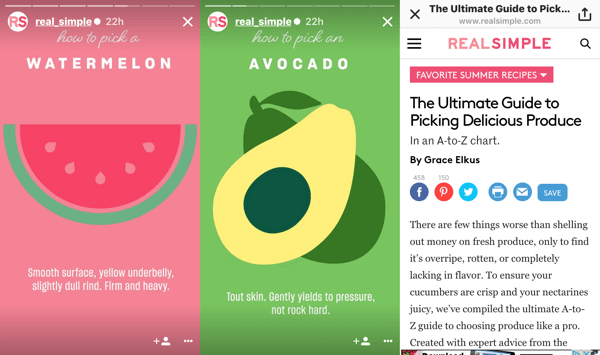
From content in each example blog post, you can create social media content chunks such as the following:
- How to create a blog post strategy in 5 minutes or less: Native video, SlideShare presentation, infographic, Instagram story broken into five short videos demonstrating each phase of the process
- Ten tools for creating awesome images for your blog: Instagram multiple-image post, short tips to share on Facebook and Twitter
- How a business coach made $7K out of this mistake: Video testimonial, quote graphics, Instagram story broken into segments throughout the day
- Why I dropped everything to found a tech startup: Behind-the-scenes video, inspirational quote graphics
- Create your content calendar in 7 days – Join the challenge: Lead generation ad with downloadable document, live video Q&A for each day of the challenge, Facebook group for challenge participants
- Small beginnings: Our content tech experiment has begun: Conversion ad with a call to action to purchase, recorded video that demonstrates the product, infographic that shows the product's value
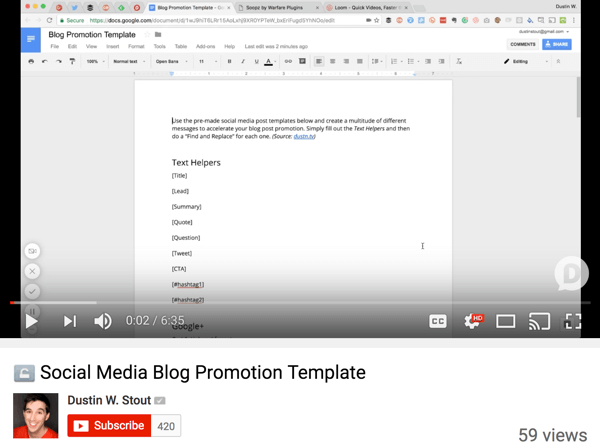
Notice all of the ways you can repurpose just one blog post. When Dustin Stout offered free downloadable templates based on a blog post, he not only gathered email addresses, but also created a YouTube video that explains how to use the templates.
Creating the Right Amount of Content for Your Prospects
Depending on your product, prospects may take their time to make a purchase, especially if what you're selling is at a higher price point. In that case, it helps to allow a longer lead time in your marketing campaigns. Your audience's tolerance for information frequency will determine your lead time.
For instance, a lower-priced product like a book or gadget may require only a one-week lead time and three pieces of content. A higher-priced product like a house or a pool may require a longer lead time and six pieces of content.
Conclusion
When you build a social media marketing funnel that supports a goal, you create more targeted and relevant content on both your blog and social media. Also, you can easily repurpose your blog posts for your social media marketing.
Remember to create content for each stage of the customer journey and adjust how much content you post based on your knowledge of your product and customers.
What do you think? Does your content build a social media marketing funnel? Have you repurposed blog posts to create content for social media? Please share your thoughts and tips in the comments.
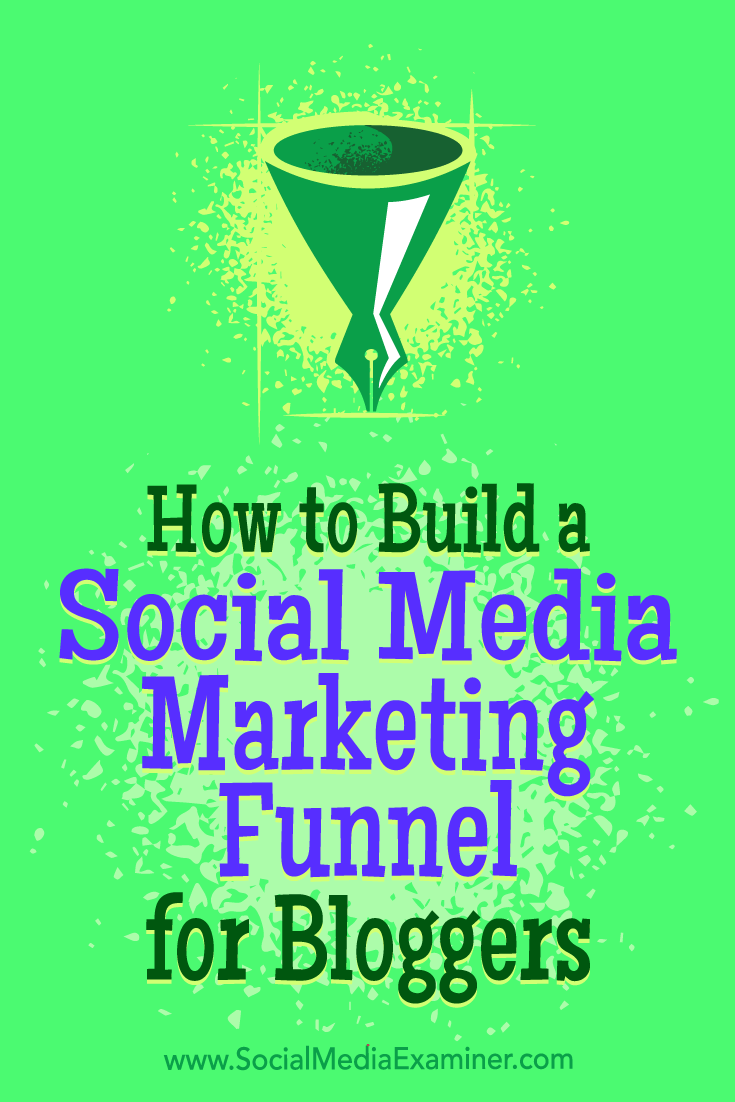
Attention Agency Owners, Brand Marketers, and Consultants

Introducing the Marketing Agency Show–our newest podcast designed to explore the struggles of agency marketers.
Join show host and agency owner, Brooke Sellas, as she interviews agency marketers and digs deep into their biggest challenges. Explore topics like navigating rough economic times, leveraging AI, service diversification, client acquisition, and much more.
Just pull up your favorite podcast app, search for Marketing Agency Show and start listening. Or click the button below for more information.

